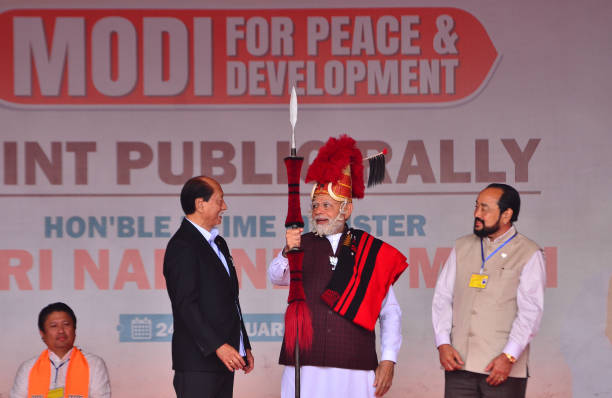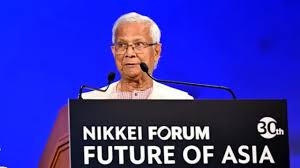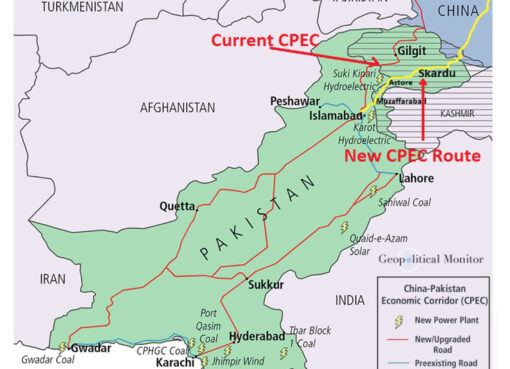Modi 3.0 is not so much about the economic reforms but political and cultural agenda that may change the face of the country, fulfilling decades long dreams of the RSS
by Prasad Nallapati*
The aggressive conduct of ruling BJP of Prime Minister Narendra Modi, in the past couple of months is, well, a little bizarre.
The party is clearly assured of a third term, going by pundits of all hues. Yet it appears hell bent on tarnishing the image of Opposition leaders and Opposition parties enmasse on the eve of the general elections.
The combined might of central agencies has been unleashed to literally cripple the united opposition alliance, `Indian National Developmental Inclusive Alliance’ (INDI Alliance). Many of their top leaders are in unbailable detention over corruption and money-laundering charges. Those, who are willing to switch sides, appear to have been spared though going by the Opposition narrative.
Delhi Chief Minister Arvind Kejriwal and many of his senior colleagues of the Aam Aadmi Party (AAP), which is also in power in Punjab, are booked in a “Liquor Scam” case along with law maker Kavita, daughter of former Telangana Chief Minister, K Chandrasekhara Rao.
Congress party, the main Opposition in the outgoing Parliament and the mainstay of Opposition INDI Alliance, has been hauled up on the charge of tax evasion. The Income Tax department claims the Grand Old Party, which ruled the country for several decades has defaulted on tax payments since 1994-95.
Also under scanner are several leaders of Trinamool Congress, which is in power in West Bengal, the ruling DMK in Tamil Nadu, the Marxists leading the coalition in power in Kerala, and Maharashtra centric Shiva Sena.
RSS – BJP’S DRIVING FORCE
Frankly, to the layman, the BJP narrative may appear counter-productive. Its ifs and buts cannot be untangled without first understanding the ideology of the Rashtriya Swayamsevak Sangh (RSS) and what it has set out for the BJP-Modi 3.0
Much of the top brass of the BJP began their careers as RSS pracharaks (grass-root cheer leaders) – Prime Minister Modi and former Prime Minister Atal Behari Vajpayee including; they continue to be guided by it.
In an interview to Sunday Guardian in January 2018, Shridhar Damle, co-author of two books on RSS ideology, said, “Once BJP remains in power for three consecutive elections, only then RSS will go for its (full) ideological programme.” The RSS looks at a 50–100-year agenda and not so much on short-term goals, he added.
AGENDA FOR THIRD TERM AND BEYOND.
“The third term will be the time to lay a strong foundation for the next 1000 years,” Modi said in February. “We have already prepared the road map for Viksit Bharat – 2047 (Developed India 2047). The vision document has been in the making for more than two years now”, he said while speaking on the floor of Parliament.
Modi sees his next term, perhaps the last, as the “templet” for future.
ECONOMIC REFORMS
A major economic goal for BJP-Modi 3.0 is $ 5 trillion GDP – a target that propels India to the position of the world’s third largest economy.
A wide range of reforms are being contemplated to achieve the goal and as Finance Minister Seetharaman puts, they encompass “all factors of production, including land, labour, and capital.” On his part, Modi says, “We want India to become a manufacturing, innovation and R&D hub.”
Many of the reforms that were already legislated but could not be implemented, like those in agriculture, labour and finance may gain a new lease of life. Bibek Debroy, Chairman of the Economic Advisory Council to the Prime Minister, said “economic reforms in Modi 3.0 will be more of refining and improving those of the Modi 1.0 and 2.0.”
CULTURAL UNITY OF INDIA
Modi 3.0 is not so much about the economic reforms but political and cultural agenda that may change the face of the country, fulfilling decades long dreams of the RSS.
Much of the agenda has already been set in motion in the second term. These include the abrogation of the Article 370 relating to special status of Jammu and Kashmir and building of Ram temple in Ayodhya, where the disputed Babri Mosque stood once.
Sayantan Ghosh of the St. Xavier College, Kolkata, who writes on the right-wing ideology, opines “the RSS feels vindicated by the recent legal developments in two new temple disputes”. His reference is to the Gyanavapi Masjid case concerning the Varanasi’s Vishwanath Temple and the Krishna Janmabhommi case in Mathura, “which set the stage for a significant reconfiguration in India’s socio-political landscape.”
RSS/BJP’s unwavering commitment to pursuing the Unified Civil Code (UCC) is likely to be taken to its logical conclusion in Modi.3.0.
“The RSS’s vision for a culturally unified India, as formally expressed in the 1951 Pune resolution, prominently features UCC as a crucial component. This not only cements the RSS agenda but also signals a profound political victory,” adds Ghosh.
A crucial step in this direction was already taken by the BJP government in Uttarakhand. It introduced a bill for the UCC which is now being examined by a select committee of the State Assembly.
POLITICAL REFORMS
Politically, the RSS would like the BJP to be a “Saffron Congress” – an all-India party that would take the place of the Grand Old Party. Totally disarrayed, the latter is in no position to offer much resistance, as Damle puts it.
“The RSS wants the Congress without the Gandhi family.”
This explains the BJP’s vilification campaign against former Prime Ministers – Jawaharlal Nehru, Indira Gandhi and Rajiv Gandhi – holding them responsible for all problems that India is facing, be it Jammu and Kashmir, border problems with China or Katchatheevu island that was given away to Sri Lanka.
The BJP wants its third term in power firmly rest on it being a pan India phenomenon – not just a cow-belt party. The RSS has long been working to expand its influence over rural masses across the country, particularly among the other backward castes (OBCs), who form over 40% of the population, and the tribals.
RSS ventures like Vanavasi Kalyan Ashram, Samajik Samarasta Manch and the Sewa recognize the diversity of the country and help the OBCs and tribals scale upward in social mobility.
The BJP is further consolidating its mass base by nominating more from the OBCs, Scheduled Castes and Tribes in parliamentary elections. Relatively unknown OBC and Tribal candidates were made chief ministers in Madhya Pradesh and Chhattisgarh which had elected their governments recently.
This is truly a transformation for the RSS-BJP which had long been rooted in urban upper class hierarchical structure.
ENSURING SMOOTH SUCCESSION
The BJP’s third term is also Modi’s last as the RSS follows an unwritten edict of retiring its top politicians by the age of 75. Modi is now 73. According to Damle, his successor is already in place and that is Yogi Adityanath, the Chief Minister of Uttar Pradesh.
“He is caste-neutral, sanyasi, no family baggage, good connect with dharma gurus of various sects and communities and 25 years of experience of running institutions,” he points out.
Yogi is the most sought-after star poll campaigner, after Modi, for BJP candidates even outside his home turf.
The united opposition believe that they cannot defeat Modi, at least in the current election, and are waiting for him to go to wrest control of Parliament and government in 2029. Both the RSS and BJP are acutely conscious of the difficulties in firmly placing Modi’s successor – whether it is Yogi Adityanath or someone else, on throne.
The opposition, therefore, must be cut to size to ensure Modi’s successor will have a smooth ride to power.
CONCLUSIONS
The third term hence is critical to further consolidate many of the path-breaking changes that have been brought in the first two terms and take them to next level.
They have bigger battles to fight not just against the opposition but judiciary as well which can only be possible with bigger majority on the floor of parliament.
Modi harping on 370 seats for BJP and 400+ with allies out of the total 542 is not a mere political rhetoric. This majority is what he requires to bring any constitutional changes.
Do we discern a pattern in the Modi government’s single-minded pursuit of the states that are critical to give the BJP the much-needed parliamentary muscle in the third term?
West Bengal, Maharashtra, Tamil Nadu and Telangana together have 146 parliamentary seats. The BJP could win only 45 of these seats in the last election and needs to drastically improve this figure to reach its target. But it looks very difficult even to retain them as the opposition is strongly entrenched in these states.
“Hat Trick Not A Given: BJP toiling to get its Arithmetic Right,” my January commentarysaid on the hurdles in the BJP’s way with its 3.0 tryst.
Bizarre it may appear to the untrained eye, but the BJP is clearly trying all its tricks to break the back of the opposition in the run up to the LS ballot.
Will the BJP succeed in its mission or the aggressive narrative will prove counter-productive?
The Indian voter will tell us in early June. Till then, as the Tamils say, it is Pārkkalām!
(* Prasad Nallapati is President of the Hyderabad-based think-tank, `Deccan Council for Strategic Studies’, and former Additional Secretary to the Govt of India)




